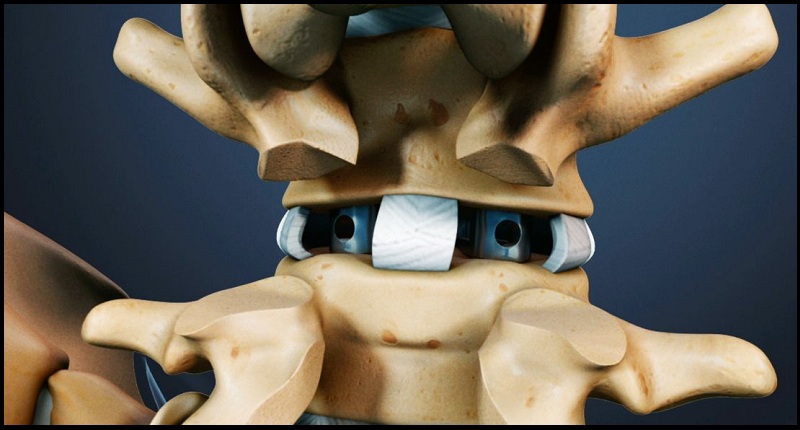Spinal fusion is surgery to permanently connect two or more vertebrae in your spine, eliminating motion between them. It involves techniques designed to mimic the normal healing process of broken bones. During spinal fusion, your surgeon places bone or a bonelike material within the space between two spinal vertebrae. Metal plates, screws and rods may be used to hold the vertebrae together, so they can heal into one solid unit.
Because spinal fusion surgery immobilizes parts of your spine, it changes the way your spine can move. This places additional stress and strain on the vertebrae above and below the fused portion, and may increase the rate at which those areas of your spine degenerate.
Why it's done
Spinal fusion permanently connects two or more vertebrae in your spine to improve stability, correct a deformity or reduce pain. Your doctor may recommend spinal fusion to treat the following spine problems:
- Broken vertebrae : Not all broken vertebrae require spinal fusion. Many heal without treatment. But if a broken vertebra makes your spinal column unstable, spinal fusion surgery may be necessary.
- Deformities of the spine : Spinal fusion can help correct spinal deformities, such as a sideways curvature of the spine (scoliosis) or abnormal rounding of the upper spine (kyphosis).
- Spinal weakness or instability : Your spine may become unstable if there's abnormal or excessive motion between two vertebrae. This is a common side effect of severe arthritis in the spine. Spinal fusion can be used to restore spinal stability in such cases.
- Spondylolisthesis : In this spinal disorder, one vertebra slips forward and onto the vertebra below it. Spinal fusion may be needed to treat spondylolisthesis if the condition causes severe back pain or nerve crowding that produces leg pain or numbness.
- Herniated disk : Spinal fusion may be used to stabilize the spine after removal of a damaged (herniated) disk.
